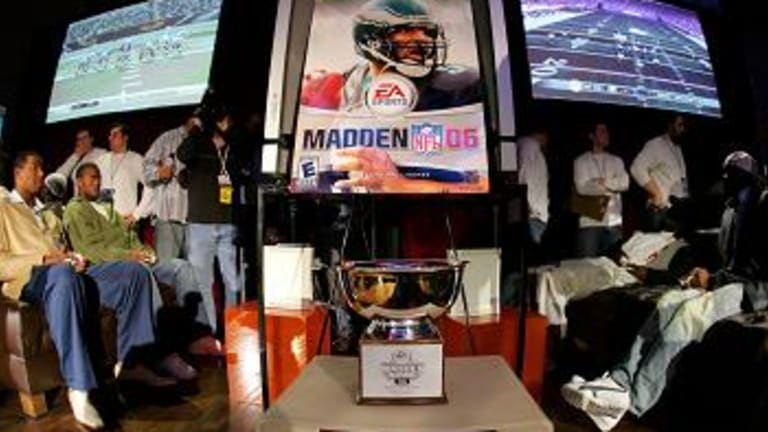Taking up the lion's share of both carts, the twin boys have thrown in myriad items -- a pigskin football, NFL jerseys, the latest installment of Madden NFL, a brand new basketball, newly minted Air Jordans, NBA Live, two oversized, lightweight Wilson Pro staffs, two ATP jerseys, and a copy of ATP Pro Tennis Live.
Whoa! Say what? Tennis jerseys and tennis games? Not at my Target!
As the tennis world in the U.S. falls to new, low heights, fans and protractors look for some reason as to why the sport has taken a back seat to the likes of cheerleading, poker, and NASCAR. With Agassi swinging his last forehand at this year’s U.S. Open, critics and some fans are quick to feed the state of U.S. tennis to the wolves, decrying the men’s game as static and shallow. We won't even discuss what they say about the women’s game.
Who, really, is to blame for the ‘demise’ of U.S. tennis, once an unstoppable force in the burgeoning tennis world of the late 60’s, 70’s, and 80’s? For some, the answer lies in the growing international nature of the sport itself.
A quick look at both the ATP and WTA Top-10 confirms the encompassing international appeal of tennis. The U.S. has to share the spotlight with countries from Argentina to Russia, a spotlight which is not shared in football or basketball. However, upon closer inspection, this theory doesn’t hold much weight.
A quick survey of the ATP/WTA Top-10 of 15 years ago shows, if not the same parity among countries of today, a similar diversification with the U.S. only slightly ahead of the pack. Switzerland, Germany, Russia, and Argentina have been represented in the top echelon of tennis since the inception of the ranking system, with the difference being their percentage of representation.
So what then, is behind the ‘dramatic’ fall of tennis' popularity? Well, you can cut the marketing and propaganda divisions of both tours a big slice of the responsibility pie.
With all the resources of a tour as successful as the ATP and WTA, the front lines should be as well represented as basketball, with its multitude of franchised products available and marketed to the youth of our nation. What child hasn’t said the phrase ‘like Mike’ or played NBA Live?
If the tours were to follow the business model of American football, this discussion would be irrelevant. There is no better marketed product in the U.S. than American football. The most popular television decision ever made was to show Monday Night Football -- which now includes Sunday night, Saturday afternoon, and some Thursday nights.
The franchising of football has grown mammoth in its scope, led in part by the industry-leading Madden NFL series. What event owns the most coveted and expensive 60 seconds in the US? The Super Bowl, of course. Each year, fans and non-fans line up in front of the tube to view TV commercials.
However, one would be hard-pressed to find a poster of one’s favorite ATP player outside of the internet. Forget about any related items such as video games, jerseys, or shoes. Oh, sure, a player’s ‘signature’ racquet can be found at any WalMart -- hidden from view, beside the fishing tackle. There’s quite a few ways to market tennis, solving the great 'demise' in the process, that have been overlooked.
It’s time for both tours to realize this.
--Kenneth
